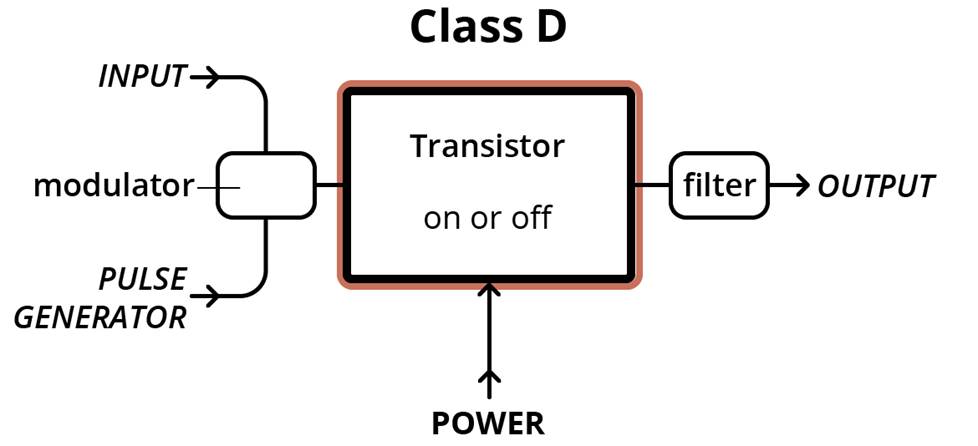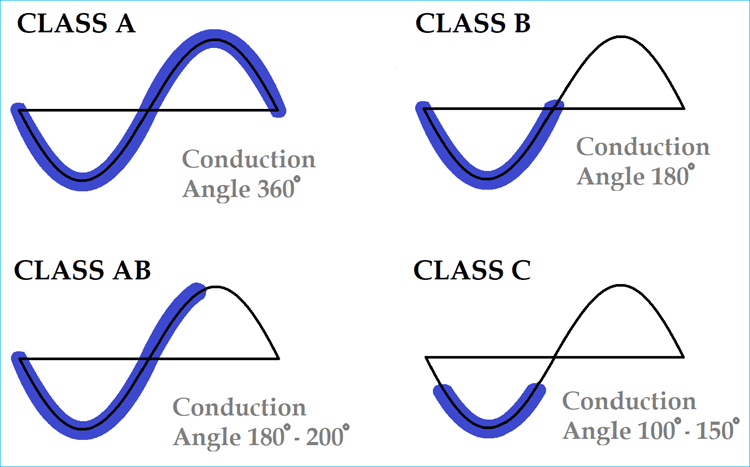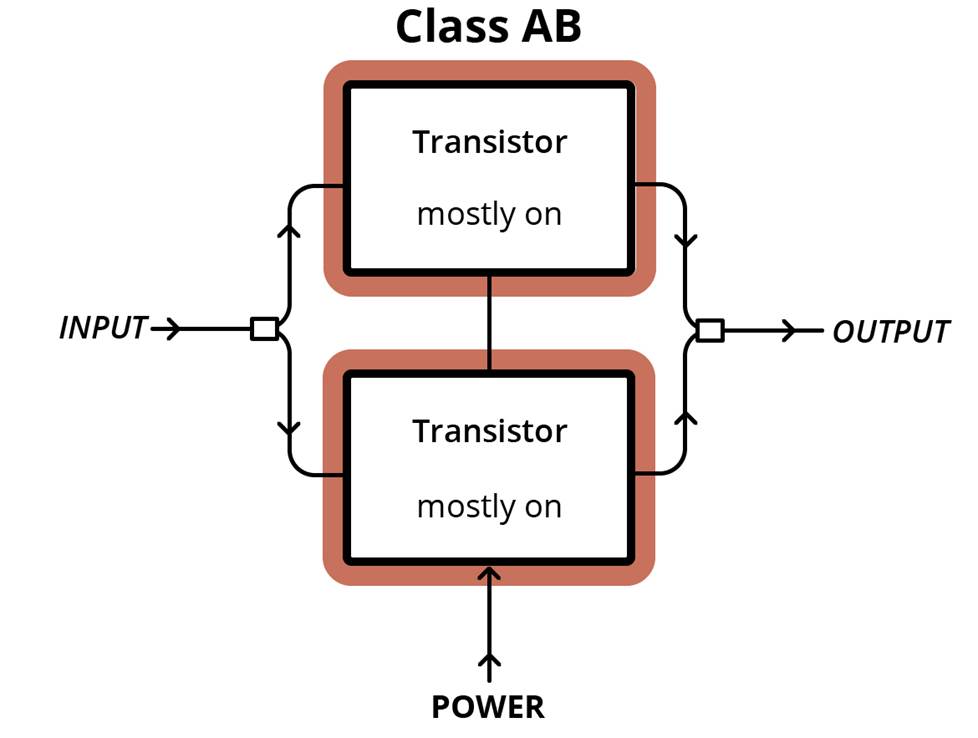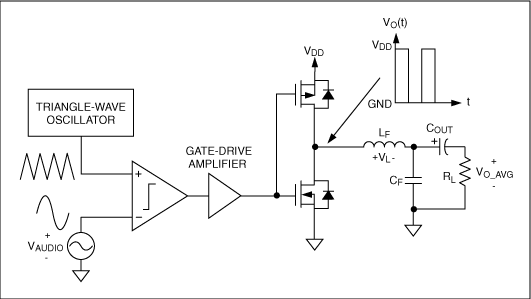class ab vs class d power consumption
It should at least be in the 50 to 100 range. Class D Audio Amplifiers.

Class D Power Amplifier Power Electronics News
When you compare the old one with the new the old ones are more musical and even have a better 3 Dimensional stage.

. This article suggests class D at practical levels has about an order of magnitude lower power consumption than class B and class A is more than an order of magnitude worse than class B. Class AB power dissipation rises as amplifi er out-put power increases and peaks below maximum amplifi er output power. High efficiencygreater than 90.
Less power consumption and lower heat generation. Theoretically the maximum efficiency for a Class D amplifier is 100. Power amps have a tough job to do particularly in live sound.
The efficiency of Class C amplifier is much more than the A B and AB. Class D Half-Bridge Topology 4. A Class D power supply is fine though.
I do believe that the difference is much larger when the amps arent running at full capacity which is all the time unless you like to listen to test tones. Like the title says can someone give me an estimate of how much power a class AB amplifier and class D amplifier would use to drive 9 channels at 10 watts each. I believe i remember reading somewhere that efficient class ab amps are around 60 efficient at full output and efficient class ds are around 80-84 at full output.
Class C amplifier is tuned amplifier which works in two different operating modes tuned or untuned. The Pioneer receivers in class D sound like shit. Typically denoted by a letter or two the most common amplifier classes used in consumer home audio today are Class A AB D G and H.
The bonus is efficiency. 2020-07-20 1254 am. Because both stages are constantly on Class A is considered to be the least efficient of power amplifier designs with an average efficiency of about 20 50 at best theoretically.
Maximum 80 efficiency can be achieved in radio frequency related operations. Class D amps really have more in common with switching power supplies than they do with the classic class A B or AB amps. Very high-power potential 400 to 500 W in a small package.
Answer 1 of 5. If youve ever glanced at the specifications sheet for an amplifier one of the things you may have noticed is the amplifiers class. Put a good class D and Class AB beside each other with a proper setup and you will not be able to tell the difference.
Theoretically the maximum efficiency for a Class D amplifier is 100. In other words they need to consume a lot of power and dissipate it as heat in order to generate useful signal. A Class-A amplifier is one in which both output stages of the device are constantly on at full power.
The high power efficiency of Class D amplifiers translates into less power consumption for a given output power but more importantly it reduces heatsink requirements drastically. They went from class AB to D. What Why and How.
If I come across a Class D amp with a good damping factor Id be happy to try it out. 0125 100 125 watts 20 eff 625 watts x 7 4375 watts. Class A you can tell the difference between other types but it still isnt much.
The loading on the power transformer is also reduced by a substantial amount allowing the use of a smaller transformer for the same power output. And dont forget that 1000 watts equal to 1 kilowatt provided by an electric radiator would probably be enough to keep your. It doesnt take a lot to hear the difference between class AB and class D the two more common amplifier classes available - and the two in question.
Pass class AB amps sounds great in class A and B. Been reading through the Class D amp reviews here and elsewhere and a point of confusion for me are the power ratings and their accuracy. These class D seem to have massive power ratings.
The AB classification of amplifier is currently one of the most common used types of audio power amplifier design. A Class D topology would look like this. Therefore class-D amplifiers are typically smaller than an equivalent class-AB amplifier.
So for example is it really OK to run a speaker with max power rating of 150W with these hypex ncore amps rated. But class D is great for subwoofer amps and even in some amp it can be good. These classes arent simple grading systems but descriptions of the.
Another advantage of the class-D amplifier is. Class D amplifiers are the best choice when it comes to power dissipation consideration because there is far less loss in power consumption when the MOSFETs are not always in the on state. Compared to an equivalent class-AB device a class-D amplifiers lower losses permit the use of a smaller heat sink for the MOSFETs while also reducing the amount of input power required allowing for a lower-capacity power supply design.
If we were to compare two 100 wattch 7ch amplifiers driven at 18th power 125 the power consumption differences between a Class AB vs. Both are depicted in figures 5 and 6. Lets say the maximum drive power of both amps is 100 watts per channel.
Class D is efficient and therefore cheaper yet marketing has pushed class D as. Class A Class B and Class D. 0125100 125 watts 80 eff 156 watts x 7 1094 watts.
The class AB amplifier is a variation of a class B amplifier as described above. Class C amplifier uses less than 180-degree conduction angle. But a true audiophile will tell you that pure class A is the key to sonic bliss not class AB.
Lets say the maximum drive power of both amps is 100 watts per channel. While a regular class AB amp might be 30-50 efficient a Class D amp will be 80-90 efficient - that is how much of the wall juice actually turns into music. So I feel Class AB still seems to make the most sense.
Class D amps are digital. The problem with class A is it uses a huge amount of power compared to other types so you will not see anything larger than 50-100 watt output amps. Yes audiophiles prefer class AB over D but it is mostly superstition and not based on measurements.
A 1000 watt amplifier for instance might be called upon to deliver up to 60 volts at a current of up to 16 amps. I have no problem at all with G or H because those are just Class AB with multiple rails. Class D amplifiers are very efficient around 90 and are actually very good.
The main drawback of class A amps is their ineffectiveness - they have a theoretical efficiency limit of only 50. Class A amplifiers are the most linear design with. As its name suggests the Class AB Amplifier is a combination of the Class A and the Class B type amplifiers we have looked at above.
They use a series of pulses to generate the music which is then put through a lowpass filter to make it sound like music again.

Classes Of Power Amplifiers Class A B Ab C D Amplifiers Explained

Class D Power Amplifier Power Electronics News

Classes Of Power Amplifiers Class A B Ab C D Amplifiers Explained

Fundamentals Of Class D Amplifiers Maxim Integrated

What Are The Different Types Of Audio Amplifier Classes Audioholics

Class D Power Amplifier Power Electronics News

Which Amplifier Class Is The Best How Class D Amplifier Technology Differs From Class A And Ab

Class D Audio Amplifiers What Why And How Analog Devices

What Are The Different Types Of Audio Amplifier Classes Audioholics

Class Ab Amplifier Design And Class Ab Biasing

Fundamentals Of Class D Amplifiers Maxim Integrated

Class Ab Amplifier Design And Class Ab Biasing

Amplifier Classes And The Classification Of Amplifiers

Class D Audio Amplifiers What Why And How Analog Devices

Which Amplifier Class Is The Best How Class D Amplifier Technology Differs From Class A And Ab

Class D Power Amplifier Power Electronics News

Classes Of Power Amplifiers Class A B Ab C D Amplifiers Explained

